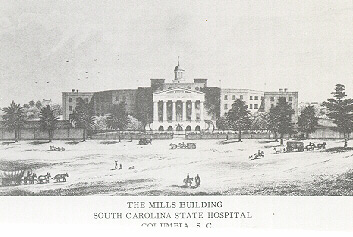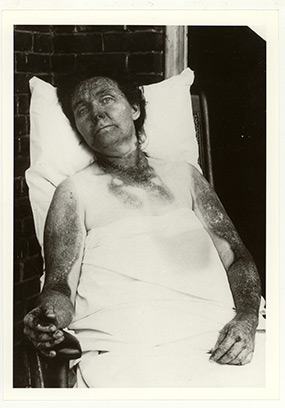
James Woods Babcock was born in Chester, South Carolina in 1856. He graduated from Philips Academy, Exeter and received both his BA and MD from Harvard University. After working for five years at the McLean Asylum in Somerville (later Waverly) Massachusetts, he accepted the position of superintendent of the State Lunatic Asylum in Columbia, SC. He resigned from that position in 1914, at which time he organized the Waverly Sanitarium in Columbia. He held the post of Professor of Psychiatry at the Medical College of South Carolina from 1915 until his death in 1922.



Pellagra in North America

Babcock’s most notable achievement/innovation is undoubtedly his identification of pellagra in North America. Pellagra is a vitamin deficiency associated with the lack of vitamin B3 (niacin) and occurs in areas where corn is the primary dietary element. If corn is not treated with lime, or is harvested too soon, niacin is not nutritionally available. Corn is often hurriedly harvested in areas struck by poverty and/or famine i.e. the post-Civil War South. The symptoms of Pellagra most often include, amongst others, dementia; an aspect of the disease that Babcock was well-placed to observe.
Babcock identified a set of symptoms frequently observed in his work at the State Lunatic Asylum in South Carolina, as being directly related to Italian and French pellagra. Indeed, at this time, pellagra had reached epidemic levels in the American South. Babcock not only identified an aggregate of symptoms as pellagra, he drew national attention to it and Founded the National Association for the Study of Pellagra. He also played a large part in the translation and publication of the first treatise on the North American variety of pellagra.
Babcock, J. W.; Lavinder, C. H.; Williams, C. F. ‘The Prevalence of Pellagra in the United States’, Government Printing office. Washington, 1909.
Image of a female pellagra patient at the South Carolina State Lunatic Asylum, circa 1900. (Waring Historical Library, MUSC, Charleston, SC)
Tuberculosis Institutions

While those suffering from pellagra may have ended up in the State Asylum, pellagra itself was not necessarily an institutional disease. Tuberculosis, on the other hand, flourished in institutional settings. A significant portion of Babcock’s research explored the reasons behind high levels of Tuberculosis in Institutions, as well as how to limit and lessen cases of infection. He insisted that chronic patients were most at risk of contracting the disease. Also high-risk were patients housed in areas with poor living conditions. In his own hospital, this meant that African American women had the highest infection and death-rates.
Beyond examining the reasons behind high tuberculosis infection rates in institutions, Babcock also suggested a four-pronged approach to managing and preventing the disease.
- Management of tuberculous patients.
- Disinfection of rooms, wards, and buildings.
- Protection of non-tuberculous against infection.
- Prophylaxis against infection of new hospitals, wards, or rooms.
Babcock, J. W., ‘The Prevention of Tuberculosis in Hospitals for the Insane’, American Journal of Insanity, 1894, p. 190.
Mills, Robert. Architectural Drawings for the South Carolina Lunatic Asylum. ca. 1822. MB 17, Folder 10. South Carolina Department of Archives and History, Columbia, South Carolina.
Mental Illness

Aside from Babcock’s work on disease and institutions, he was also an early advocate against the stigmatization of mental illness. With very limited means, he battled miserable conditions and worked for legislation that would protect mental patients.
Most gratifying was legislation, effective in 1895, changing the name of the institution from the lunatic asylum to that of the S.C. State Hospital for the Insane. Dr. Babcock’s intense desire was to shield the mentally ill from curiosity seekers and to effect an attitude of acceptance, helpfulness, and understanding. He labored diligently to remove the unkind, unnecessary stigma that ignorance, intolerance and lack of sympathetic understanding placed upon mental patients.
Babcock’s contributions to medicine are slightly different from the more concrete physical items invented by other MUSC innovators. Nevertheless, his work in the field was novel, progressive, and significant.
Hall, William S., ‘James Woods Babcock, M.D. ’Psychiatrist, Humanitarian, and Scholar’, Paper prepared for delivery before the Colombia Medical Club, Dec 15, 1969, p. 10.
Historic American Buildings Survey, photocopy of original drawing at South Carolina Archives Department, Columbia, S.C. (n.d.) PRINCIPAL FRONT OF THE LUNATIC ASYLUM. - Lunatic Asylum, Bull Street & Elmwood Avenue, Columbia, Richland County, SC.
